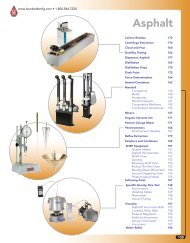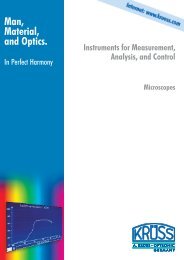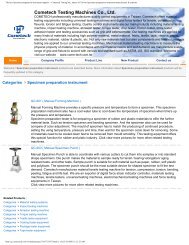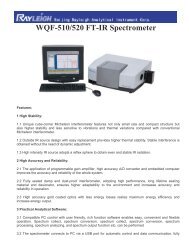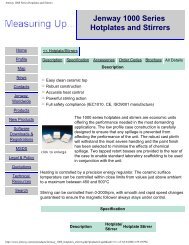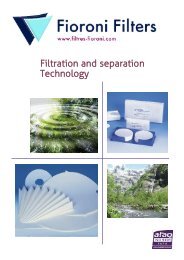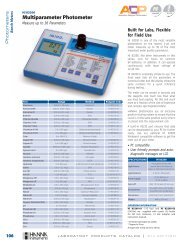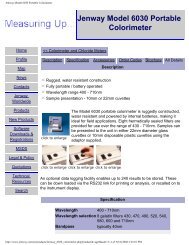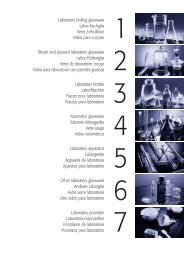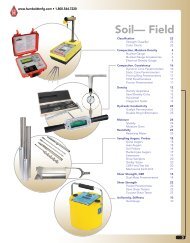Esco Labculture® Plus Class II Type A2 Biosafety Cabinet - Comlibris
Esco Labculture® Plus Class II Type A2 Biosafety Cabinet - Comlibris
Esco Labculture® Plus Class II Type A2 Biosafety Cabinet - Comlibris
You also want an ePaper? Increase the reach of your titles
YUMPU automatically turns print PDFs into web optimized ePapers that Google loves.
13<br />
A Guide To <strong>Biosafety</strong> And <strong>Biosafety</strong> <strong>Cabinet</strong>s<br />
3. Material Placement<br />
The front intake grill of <strong>Class</strong> <strong>II</strong> BSCs must not be blocked with paper,<br />
equipment or other items. Materials to be placed inside the cabinet should<br />
be surface-decontaminated with 70% alcohol. Work may be performed on<br />
disinfectant-soaked absorbent towels to capture splatters and splashes.<br />
All materials should be placed as far back in the cabinet, towards the rear<br />
edge of the work surface, as practical without blocking the rear grill. Aerosolgenerating<br />
equipment (e.g. mixers, centrifuges, etc.) should be placed<br />
towards the rear of the cabinet. Bulky items, such as biohazard bags, discard<br />
pipette trays and suction collection flasks should be placed to one side of the<br />
interior of the cabinet. Active work should flow from clean to contaminated<br />
areas across the work surface.<br />
The autoclavable biohazard collection bag and pipette collection tray should<br />
not be placed outside the cabinet. The frequent in-and-out movement<br />
needed to use these containers is disruptive to the integrity of the cabinet’s<br />
air barrier, and can compromise both personnel and product protection.<br />
4. Operation and Maintenance<br />
Most BSCs are designed to permit operation 24 h/day, and investigators find<br />
that continuous operation helps to control the levels of dust and particulate<br />
materials in the laboratory. <strong>Class</strong> <strong>II</strong>A1 and <strong>II</strong><strong>A2</strong> BSCs exhausting to the<br />
room or connected by thimble connections to dedicated exhaust ducts can<br />
be turned off when not in use. Other types such as <strong>II</strong>B1 and <strong>II</strong>B2 BSCs,<br />
which have hard-duct installations, must have air flow through them at all<br />
times to help maintain room air balance.<br />
<strong>Cabinet</strong>s should be turned on at least 5 min before beginning work and after<br />
completion of work to allow the cabinet to “purge”, i.e. to allow time for<br />
contaminated air to be removed from the cabinet environment.<br />
All repairs made on BSCs should be made by a qualified technician. Any<br />
malfunction in the operation of the BSC should be reported and repaired<br />
before the BSC is used again.<br />
5. Ultraviolet Lights<br />
Ultraviolet lights are not required in BSCs. If they are used, they must be<br />
cleaned weekly to remove any dust and dirt that may block the germicidal<br />
effectiveness of the light. Ultraviolet light intensity should be checked<br />
when the cabinet is recertified to ensure that light emission is appropriate.<br />
Ultraviolet lights must be turned off while the room is occupied, to protect<br />
eyes and skin from inadvertent exposure.<br />
6. Open Flames<br />
Open flames should be avoided in the near microbe-free environment created<br />
inside the BSC. They disrupt the air flow patterns and can be dangerous when<br />
volatile, flammable substances are also used. To sterilize bacteriological



